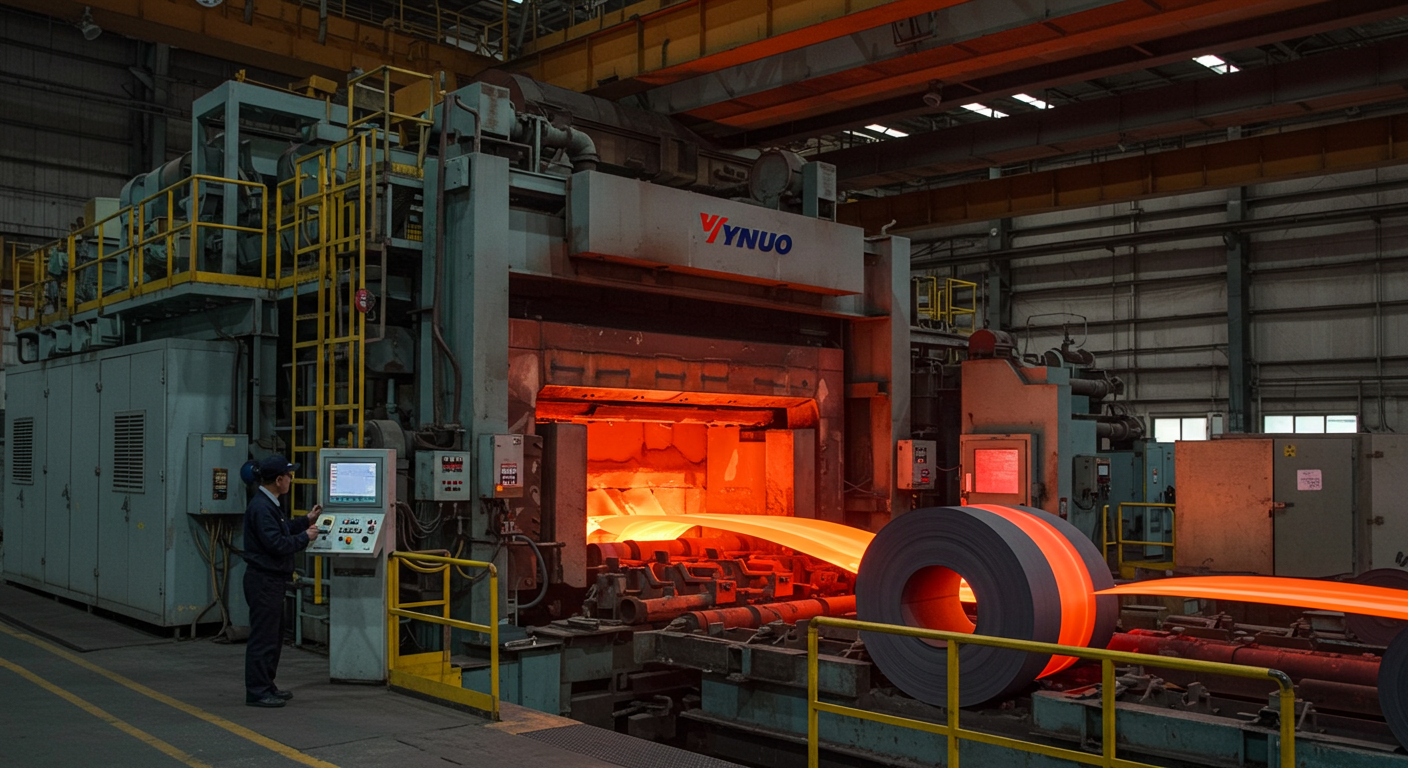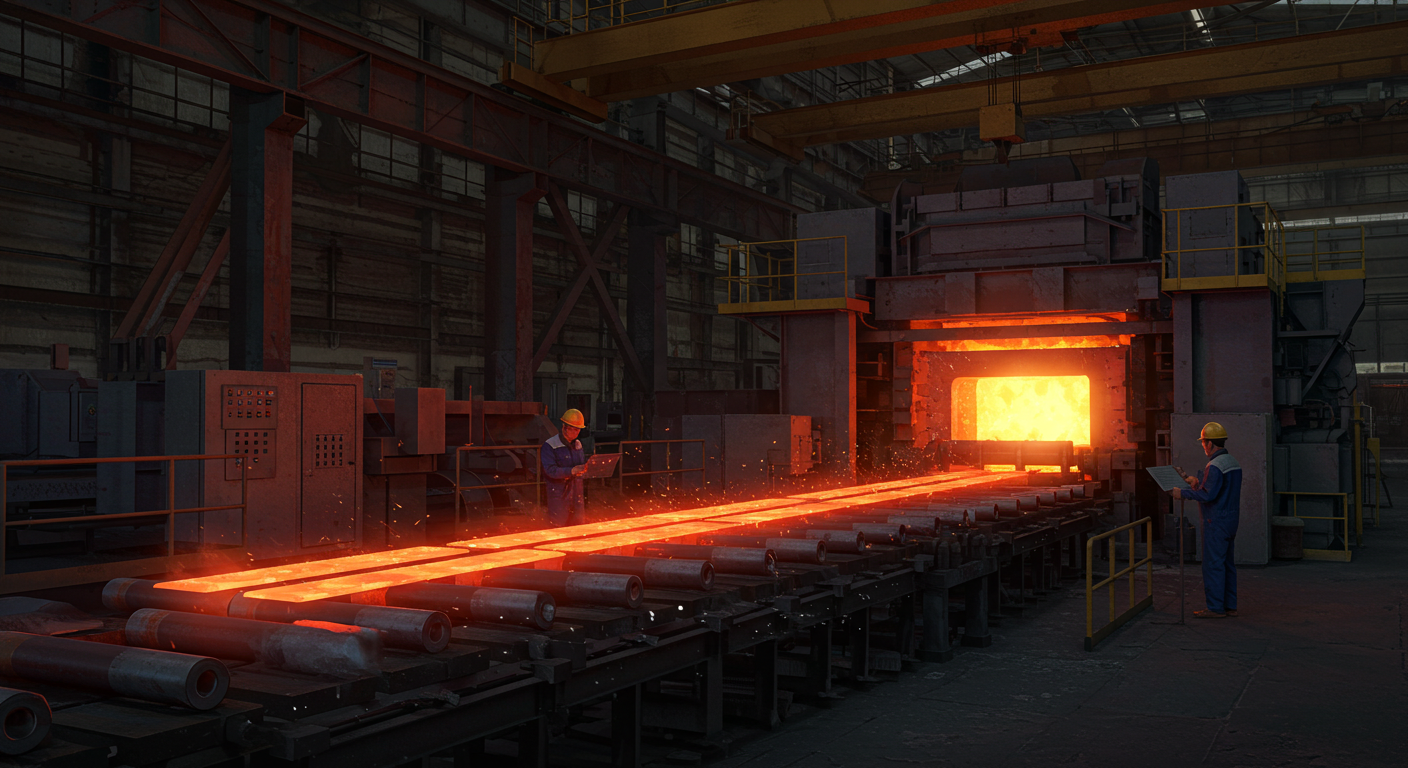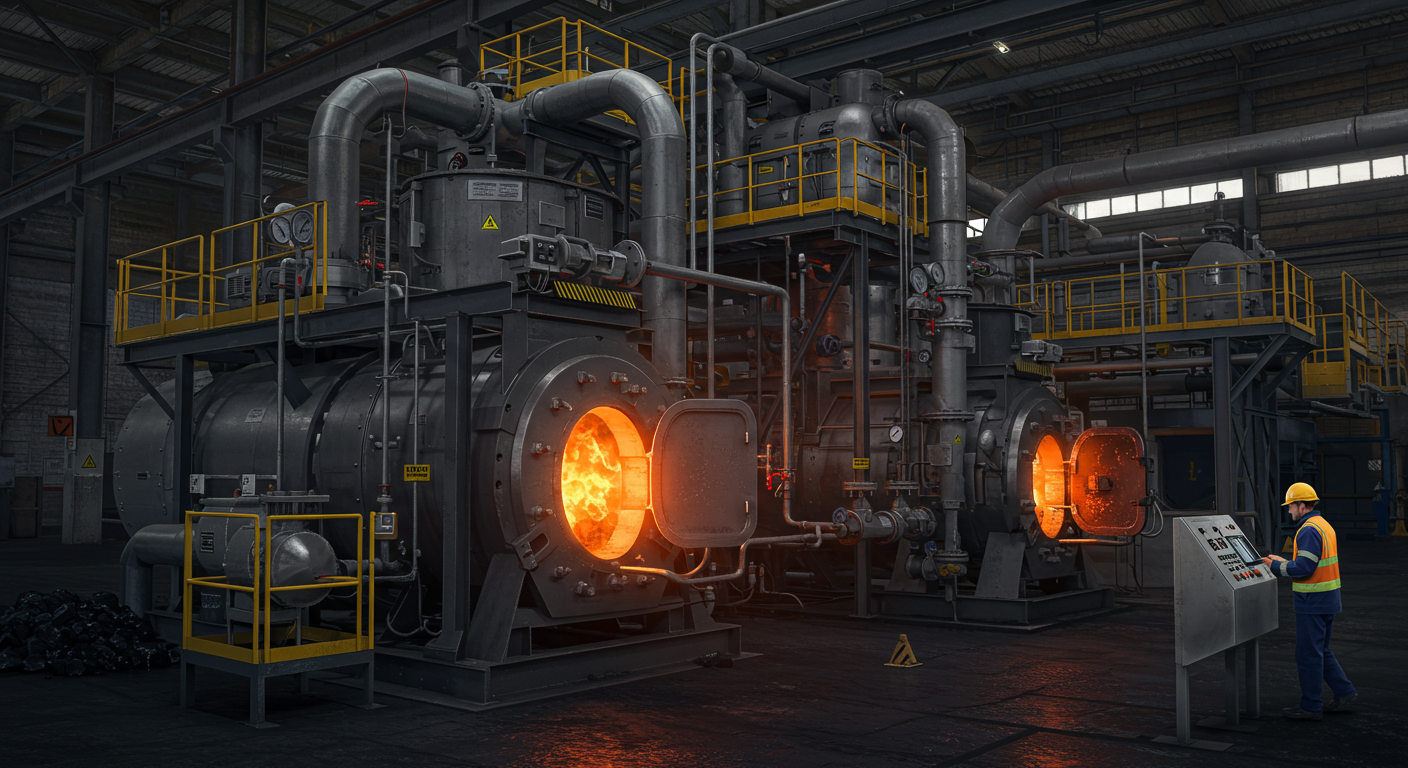When it comes to industrial heating and heat treatment processes, choosing the right furnace type is essential for meeting specific production needs and optimizing operational efficiency. Among the various furnace options available, the trolley type furnace stands out as a versatile and efficient choice. In this blog, we will delve into the key differences and advantages of the trolley type furnace when compared to continuous furnaces.
Trolley Type Furnace: Precision Heating in Batches
Trolley type furnaces are designed to accommodate batch processes. These furnaces consist of a stationary chamber, and materials or products to be heated are loaded onto trolleys. The trolleys are then rolled into the furnace for processing. This furnace type is particularly well-suited for operations that require precision control over temperature, atmosphere, and heating rates.
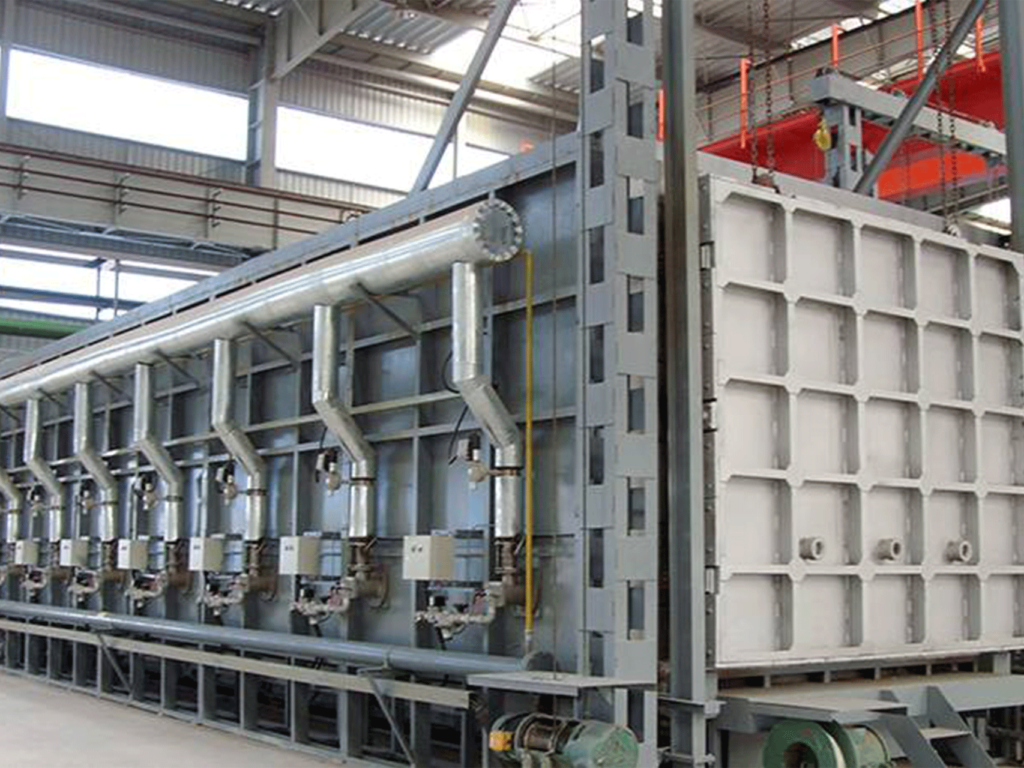
Continuous Furnace: Steady Production with a Flow
In contrast, continuous furnaces are designed for uninterrupted, high-volume production. They feature a conveyor system that allows materials or products to move through the furnace on a continuous basis. Continuous furnaces are often employed in applications where a consistent output is necessary and when materials can be processed without the need for frequent temperature or atmosphere adjustments.
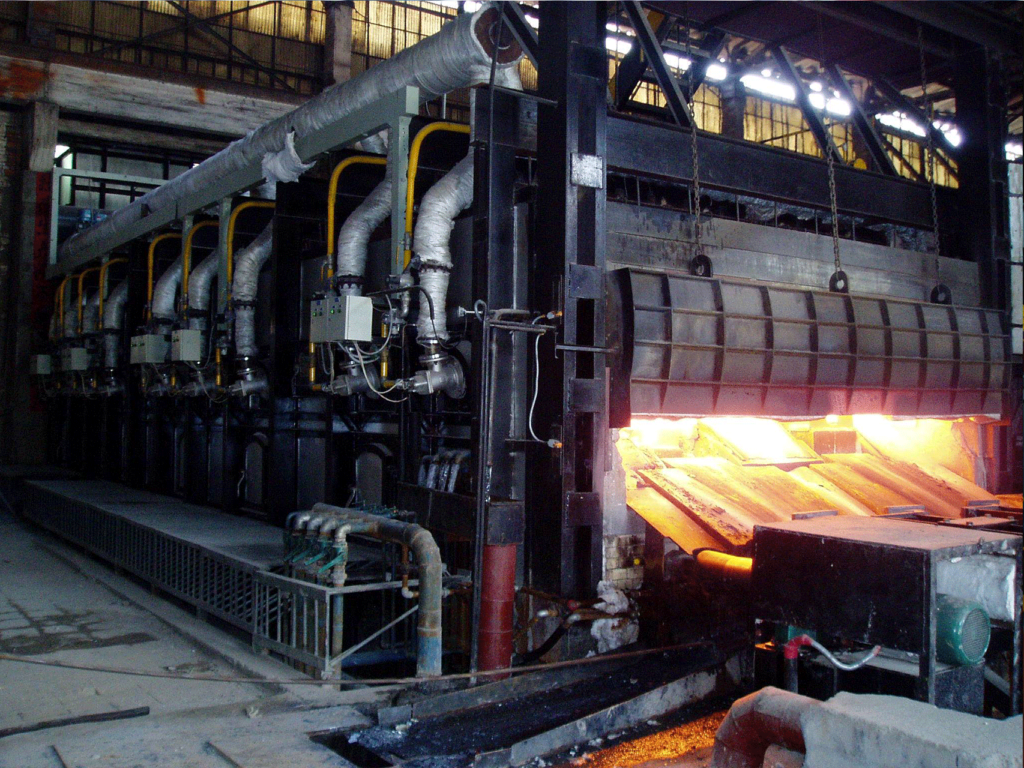
Requirements for Trolley Type Furnace Trolleys
Trolley Type Furnace Trolleys serve as a bridge between the raw materials and the high-temperature furnaces. They are a common sight in industries such as steel, aluminum, and metallurgy, where extreme temperatures are required to shape, mold, or treat materials. These trolleys must meet several key requirements:
1. High-Temperature Resistance: The trolleys must withstand extreme temperatures that can reach up to 1000°C or more. Traditional materials often fail under these conditions, necessitating the use of specialized alloys and refractory materials.
2. Durability: Given the harsh conditions they operate in, Trolley Type Furnace Trolleys need to be exceptionally durable. They should resist corrosion, oxidation, and wear to ensure a long service life.
3. Ease of Movement: These trolleys should move smoothly within the furnace and, when required, be easily removed for maintenance. This requirement demands reliable and robust wheels and support structures.
4. Load-Bearing Capacity: Different industries have varying requirements when it comes to the weight and size of the materials being transported. Trolley Type Furnace Trolleys must be designed to accommodate these varying loads safely.
5. Energy Efficiency: In an era of growing environmental concerns and high energy costs, these trolleys should be designed with energy efficiency in mind to reduce operational costs.
Advantages of Trolley Type Furnaces
1. Versatility: Trolley type furnaces are highly adaptable, making them suitable for a wide range of applications. They can handle different materials and products, making them ideal for industries like automotive, metalworking, and heat treatment.
2. Precise Temperature Control: Trolley type furnaces excel in providing precise temperature control and uniform heating, critical for industries that require specific heat treatment processes.
3. Batch Processing: Trolley type furnaces are perfect for small to medium-scale production runs, research and development, and jobs that involve multiple heating cycles. They allow for individualized processing in each batch.
4. Ease of Maintenance: Since trolley furnaces are designed for intermittent operation, they often experience less wear and tear compared to continuous furnaces. This reduces maintenance requirements and prolongs the lifespan of the equipment.
Differences Between Trolley Type and Continuous Furnaces
1. Operational Mode: The most significant difference between the two furnace types is their operational mode. Trolley furnaces operate in batch mode, while continuous furnaces provide a continuous flow of materials.
2. Production Rate: Continuous furnaces are designed for high-volume production, offering a steady output. Trolley furnaces are better suited for smaller-scale or diverse production requirements.
3. Energy Efficiency: Continuous furnaces are often more energy-efficient when dealing with high-volume processes. Trolley furnaces can be less efficient for large-scale production.
Differences in Application
The choice between Trolley Type Furnace and Continuous Furnace largely depends on the specific requirements of an industry:
1. Metallurgy and Heat Treatment: Trolley Type Furnaces are often preferred in the metallurgical industry for batch processing of metal components. They excel in applications like annealing, tempering, and carburizing.
2. Manufacturing and Assembly: Industries that involve the manufacturing and assembly of various components can benefit from Trolley Type Furnaces due to their adaptability. For example, in the production of machine parts or industrial equipment, the ability to process a mix of components is advantageous.
3. Continuous Production: In contrast, industries with high-volume, continuous production needs, such as automotive or electronics manufacturing, favor Continuous Furnaces due to their high throughput capabilities and efficiency.
JiangSu YiNuo Thermal Energy Technology Co., Ltd.: A Trusted Manufacturer
When considering the acquisition of a trolley type furnace, it’s crucial to choose a reputable manufacturer. JiangSu YiNuo Thermal Energy Technology Co., Ltd. is a renowned manufacturer in the field, known for its commitment to quality and innovation. Their trolley type furnaces are built to the highest standards, ensuring reliability and performance.
How Trolley Type Furnace Trolleys Solve Industry Problems
1. High-Temperature Resistance: YiNuo’s Trolley Type Furnace Trolleys are constructed using advanced materials and refractory coatings. These trolleys can withstand extreme temperatures without deformation or damage, ensuring a reliable and continuous production process.
2. Durability: The trolleys from YiNuo are built to last. They are resistant to corrosion and oxidation, which extends their service life and minimizes downtime for maintenance and replacement.
3. Ease of Movement: These trolleys are designed with precision engineering, ensuring they move smoothly within the furnace environment. The robust wheels and support structures enable seamless transportation and precise positioning of materials.
4. Load-Bearing Capacity: YiNuo offers a range of trolley types, including customized solutions for various load-bearing requirements. Whether dealing with heavy steel ingots or smaller components, YiNuo’s trolleys can handle the job.
5. Energy Efficiency: YiNuo Thermal Energy Technology Co., Ltd. is committed to sustainable manufacturing practices. Their trolleys are designed with energy efficiency in mind, helping industries reduce their energy consumption and environmental footprint.
Conclusion
The choice between a trolley type furnace and a continuous furnace largely depends on the specific requirements of your operation. Trolley type furnaces offer versatility, precision, and batch processing capabilities, making them ideal for many industrial applications. On the other hand, continuous furnaces are better suited for high-volume, uninterrupted production processes. Understanding the differences and advantages of each type will help you make an informed decision for your heating and heat treatment needs.





